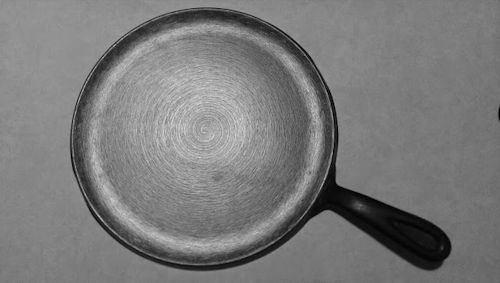RobHerrington
Member
From the primer on this site:
With cooking surfaces machined smooth after casting, and subsequently "seasoned" by the build-up of polymerized fat from cooking, vintage cast iron is considered the original "non-stick" cookware.
How is "machine smoothed" any different from sanding a rough surface, which is discouraged?
With cooking surfaces machined smooth after casting, and subsequently "seasoned" by the build-up of polymerized fat from cooking, vintage cast iron is considered the original "non-stick" cookware.
How is "machine smoothed" any different from sanding a rough surface, which is discouraged?

